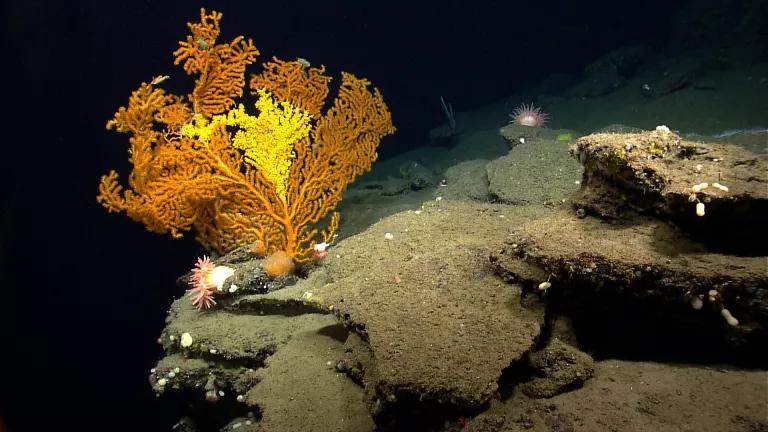Trump Administration Puts Our Monuments on the Chopping Block

Interior Secretary Zinke has recommended President Trump open our public lands and waters up to drilling, mining, and commercial development.
Today, U.S. Department of the Interior Secretary Ryan Zinke made his long-awaited recommendations on the future of America’s public lands and waters, opening our national monuments to industrial exploitation. In an April executive order, President Trump directed Zinke to review 27 national monuments created in the past 21 years. Zinke’s announcement today, urging the scale-back of protections, is yet another gift from this administration to industrial and commercial interests.
“This proposed rollback of our treasured public lands and waters is as outrageous as it is illegal," said NRDC president Rhea Suh. "And it flies in the face of the original intention for our national monuments—to save America’s most special places for everyone, not just an entitled few."
While Zinke spared national monuments such as Washington’s Hanford Reach and Idaho’s Craters of the Moon, he has paved the way for other treasures to be ravaged by drilling, mining, and other development.
“Bears Ears is an American wonderland of sandstone canyons, desert mesas, and forested highlands sacred to Native American peoples and important to us all. We’ll fight to protect those lands and all they mean from the hazards of oil and gas drilling,” Suh said. “The Northeast Canyons and Seamounts Marine National Monument, off the coast of New England, contains some of the richest, most pristine marine habitat anywhere off the continental United States. We’ll stand up to protect this ‘Grand Canyon of the sea.’”
Our public waters and lands attract half a billion visits per year for recreation, reflection, and family gatherings—they also contribute to an $887 billion–a–year outdoor recreation industry that supports 7.6 million jobs.
And their natural legacy belongs to us all. President Theodore Roosevelt, a champion of conservation, helped secure the future of our most cherished lands, waters, and historical sites in 1906 with the creation of the Antiquities Act, which empowers every president to designate areas for protection as monuments in the public interest. “Our laws grant presidents the power to protect special places for all time. No president, though, has the right to take public waters and lands away from us for the sake of industrial ravage and ruin,” Suh said.
Trump is the first president in more than a century to try to flout the law.
“These cherished waters and iconic lands have been set aside, for all time, so that future generations may know the natural splendor, cultural diversity, and vivid history we share as American people,” Suh said. “That’s a promise we’ve made to our children. It’s a promise we’re going to keep. If Trump tries to break it, we’ll see him in court. That’s a promise, too.”
